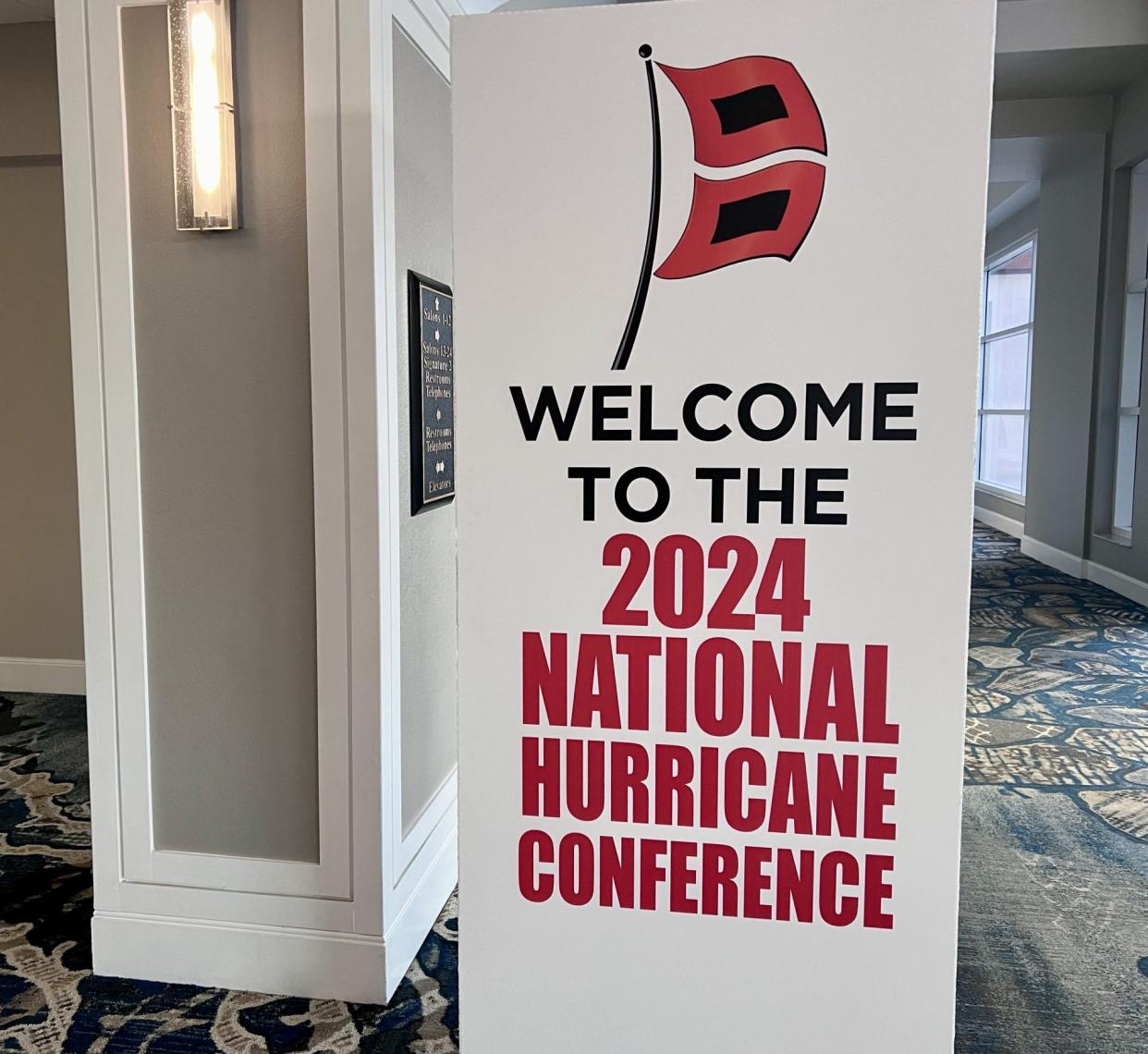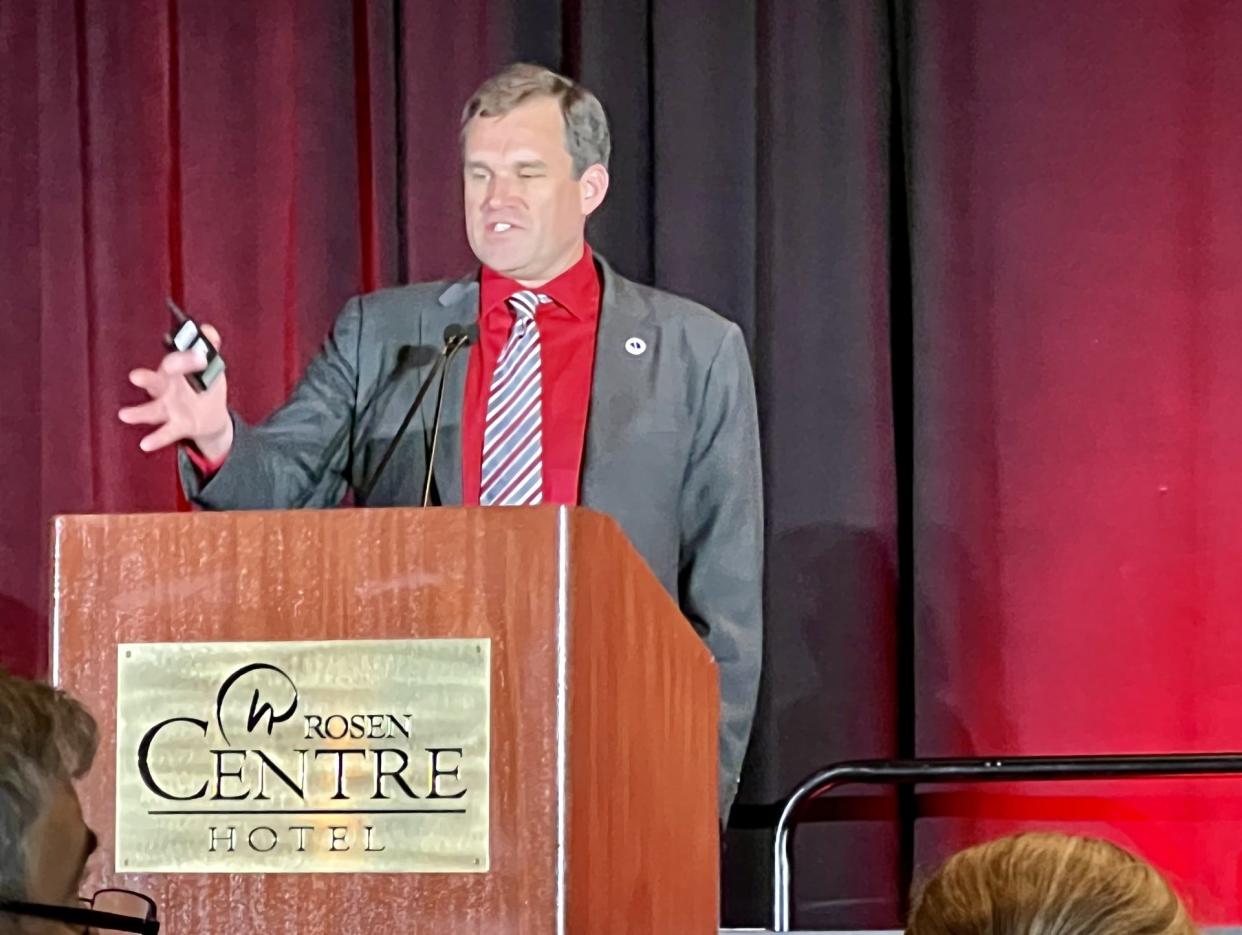2024 hurricane season: Florida Emergency Manager Kevin Guthrie pledges better communication
ORLANDO — Hurricane Ian drowned dozens of Lee County residents in 2022 with a merciless storm surge that overran narrow barrier islands with up to 15 feet of choking saltwater.
Florida Division of Emergency Management Director Kevin Guthrie said many people were just a few miles, or less, from salvation.
“Had people just gotten across Estero Bay to the main side of Fort Myers they would be alive today,” said Guthrie, who spoke Monday, March 25, during the first day of the 2024 National Hurricane Conference in Orlando.
But what he heard repeatedly after Ian’s fury left Fort Myers Beach a scar of shredded homes was that people who stayed had compared the approaching tropical cyclone to two recent predecessors — 2004’s Hurricane Charley and 2017’s Hurricane Irma.
Irma came from the south, across the Everglades, which acts as a natural protector from storm surge to some extent. Charley was small and fast, which reduced its storm surge. Neither compared to Ian’s massive size and the watery death experts knew it could bring.
Deadly surge amplified: Hurricane Ian underwent an eyewall change, turning a disheveled mess into a monster
And making those distinctions between storms more clear is a priority for Guthrie this hurricane season. Staring at a sobering but sterile hurricane cone or listening to bleating watches and warnings needs to be bolstered by a narrative. Hurricane season runs June 1 through Nov. 30.
“We have got to tell the story about why people need to evacuate,” Guthrie said. “People said ‘Why should I leave for the water when the water never made it here [in Irma]? I heard it over, and over and over again.”
Evacuations have many challenges with some people finding barriers such as no transportation or concerns about when they can return to their homes if they leave. Guthrie said now is the time to contact your county emergency manager to talk about how you can get to a shelter if you are evacuated and don’t have a ride.

But there is also stubbornness and either a lack of or overload of information. Sometimes too many people evacuate— like the more than 6 million during Irma, or not enough — like in Ian.
According to the NHC’s report on Ian, there were 41 storm surge deaths directly related to the hurricane with 36 of them occurring in Lee County.
“We all know no one is going to evacuate unless they feel personally threatened,” said Louisiana State University professor Brian Wolfshon, who studies evacuation behavior and spoke during a session on evacuation planning. “It’s not until people think, ‘Ooh, I’m in trouble.’”
About 2,275 emergency managers, first responders and meteorologists are attending the National Hurricane Conference, which runs through Thursday.
“I’m glad to be alive:" Stories of survival, gratitude, regret in wake of Hurricane Ian
It’s a chance for emergency personnel to renew certifications, forecasters to learn about the newest products from the NHC and officials to impress upon residents the importance of being prepared.
Although the National Oceanic and Atmospheric Administration’s official hurricane forecast isn’t released until late May, the atmosphere is already hinting at an active season with the El Niño waning and La Niña given a 62% chance of developing in June or August. That’s just ahead of the most active part of the season and when already abnormally warm sea surface temperatures are at their warmest.
The climate pattern La Niña can reduce hurricane-shredding wind shear in the tropical Atlantic Ocean, providing more fertile ground for budding storms.

“In 2023, we had hurricane impacts across the country from California to Texas to another major hurricane landfall in Florida to Ophelia along the east coast and the impacts of Lee in the New England states,” said NHC Director Michael Brennan. “All portions of the U.S. are at risk every year.”
Brennan noted that Hurricane Idalia’s Category 3 landfall in the Big Bend region of Florida last August was the ninth major hurricane to make landfall in the United States going back to 2017. A major hurricane is considered a Category 3 (111 mph to 129 mph) or higher.
Despite a strong El Niño last hurricane season, a record warm Atlantic Ocean helped nurture 20 named storms, ranking 2023 in fourth place for highest number of named tropical cyclones since 1950. An average hurricane season has 14 named storms.
Guthrie emphasized that ahead of hurricane season people should find out if they are in an evacuation zone, noting that evacuation zones are different than FEMA flood zones. Also, he said find out if your home was built to Florida building codes approved after Hurricane Andrew. Knowing what your home can withstand will reduce the number so-called “shadow evacuations” — people who leave when they don’t have too.
And keep electric cars half charged and gas tanks half full at all times in case you have to evacuate.
“You don’t have to drive hundreds of miles,” Guthrie said. “Go tens of miles versus hundreds of miles.”
Kimberly Miller is a veteran journalist for The Palm Beach Post, part of the USA Today Network of Florida. She covers real estate and how growth affects South Florida's environment. Subscribe to The Dirt for a weekly real estate roundup. If you have news tips, please send them to kmiller@pbpost.com. Help support our local journalism, subscribe today.
This article originally appeared on Palm Beach Post: 2024 Florida hurricane season could be very active with storms
